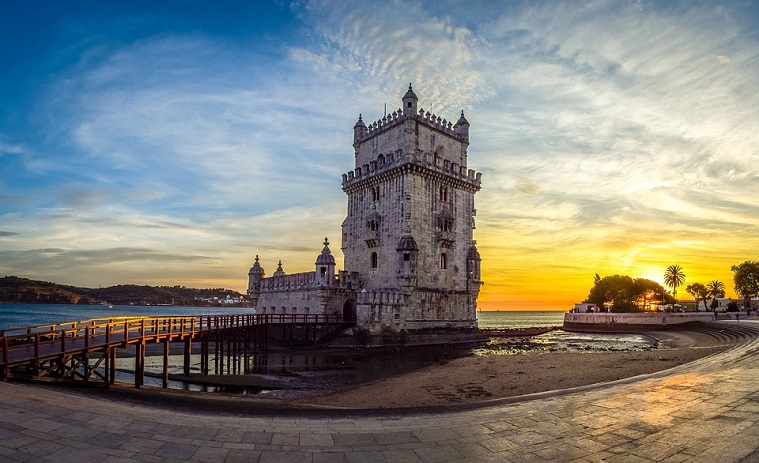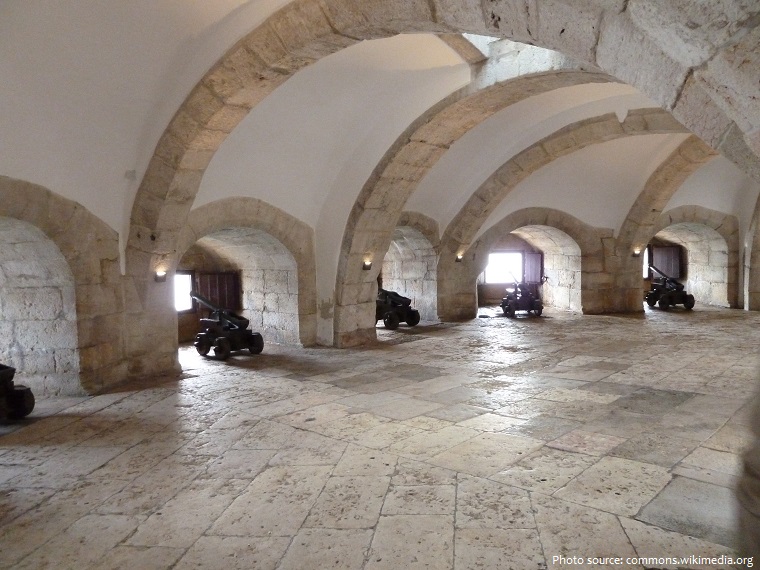Belém Tower or the Tower of St Vincent is a fortified tower in Lisbon, Portugal.
It is located in the Belém district of Lisbon approximately 2.5 kilometers (1.6 miles) from central Lisbon.
Granted World Heritage status by UNESCO in 1983, the Belém Tower is today one of the most popular tourist attractions in Lisbon.
Originally conceived as a lighthouse, the tower was eventually built as a defensive fortress on the orders of King Manuel I. Architect Francisco de Arruda was tasked with designing the tower.
The tower was built in the early 16th century and is a prominent example of the Portuguese Manueline style, but it also incorporates hints of other architectural styles.
The structure was built from lioz limestone and is composed of a bastion and a 30-meter (98.4 ft), four-storey tower.
When it was inaugurated in 1521, the tower would have been much farther from the shore than it is today – the earthquake of 1755 shifted the river’s course, and in the 19th century, land on the north bank was reclaimed, making the river narrower.
The main façade of the fortress faces the sea and offers a completely different impression of the tower from that enjoyed along the riverbank.
A single narrow, steep staircase provides access to all floors, including the roof, and it can get quite crowded.
The interior of the bastion, with a circular staircase at the north end, has two contiguous halls with vaulted ceilings supported by masonry arches, as well as four storage lockers and sanitary facilities.
The interior is divided into several levels. The first level is where the Governor’s Hall (Sala do Governador) is located, whereas the so-called Sala dos Reis (King’s Hall) is located on the second floor. The Audience Hall (Sala das Audiencias) is located on the third floor. The fourth floor is sunken in the richly decorated set yielded by the ceiling and by the walls.
On the outside of the lower bastion, the walls have spaces for 17 cannons with embrasures affording a view of the river. The upper tier of the bastion is crowned by a small wall with bartizans in strategic places, decorated by rounded shields with the cross of the Order of Christ encircling the platform.
One of the highlights is the Gothic statue of Nossa Senhora do Bom Sucesso (Our Lady of Good Fortune) placed under a lushly decorated canopy, to the rhinoceros head under the western watchtower of the structure.
The tower is one of the 7 wonders of Portugal received over 500,000 visitors per year.
Saint Vicente is the patron saint of Lisbon and of the fortification, whose alternative name is the Tower of St Vincent.


